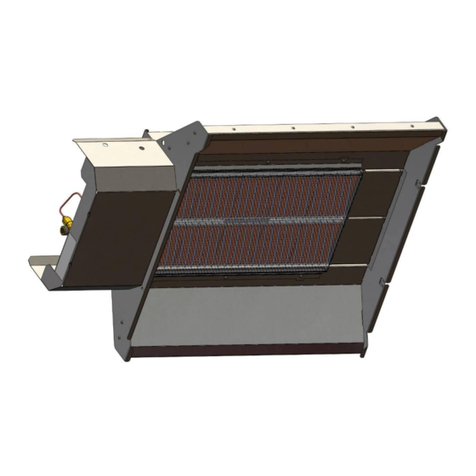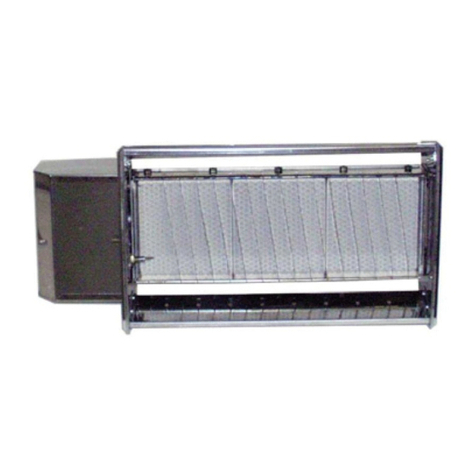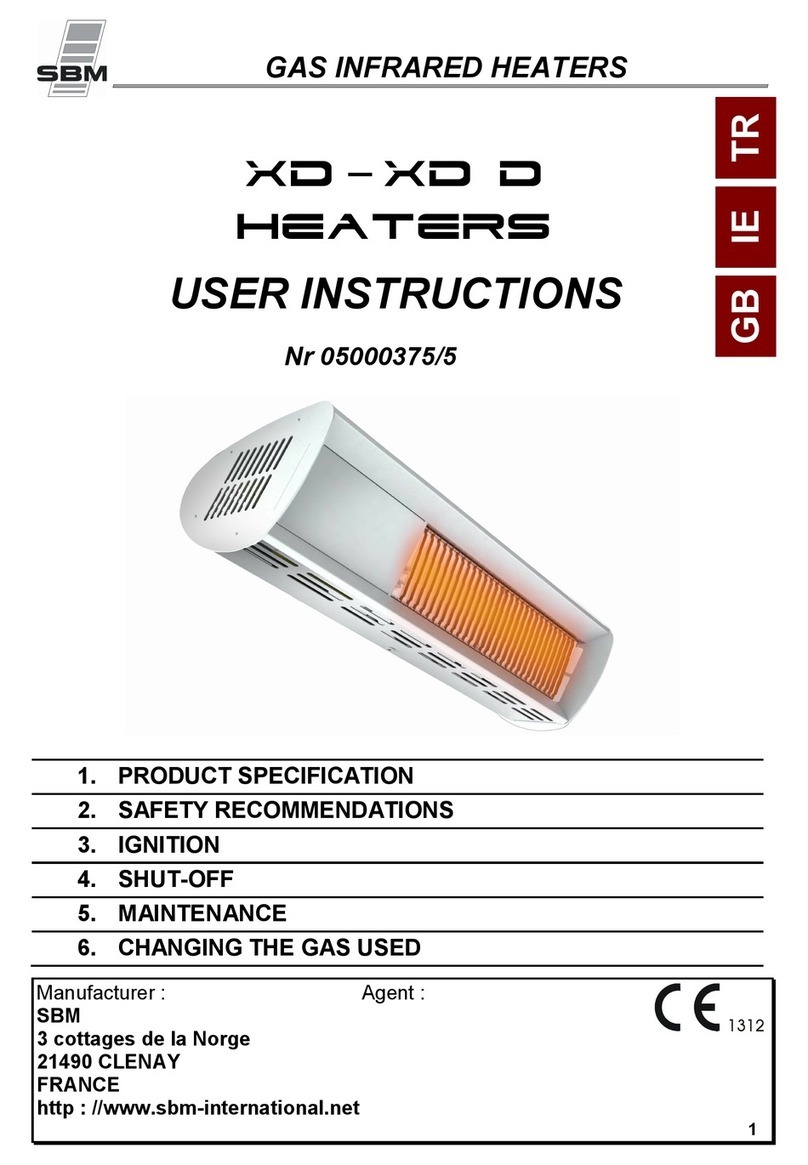
5
2. TECHNICAL SPECIFICATIONS
AMC MODEL
12 19 29 39 48 58 78 97 116
Maximal heat input Hi (
&
) kW 12,5 20,0 30,0 40,0 50,0 60,0 80,0 100,0 120,0
Minimal heat input Hi (
&
1) kW 4,0 6,0 9,0 12,0 15,0 18,0 24,0 30,0 36,0
Maximal heat output (
&
) kW 12,0 19,2 29,0 38,8 48,3 58,0 77,6 96,8 115,8
Minimal heat output (
&
) kW 4,2 6,4 9,5 12,8 15,9 19,1 25,2 31,5 37,8
Maximal heat input Hi (
) kW 10,5 16,8 25,8 33,3 42,0 49,8 66,6 84,0 99,6
Minimal heat input Hi (
) kW 3,1 5,0 7,7 10,1 12,6 15,2 20,2 25,2 30,4
Maximal heat output (
) kW 10,1 16,1 24,9 32,3 40,5 48,1 64,6 81,0 115,8
Minimal heat output (
) kW 3,3 5,3 8,0 10,8 13,4 16,1 21,2 26,5 31,9
Efficiency at max. heat input % 96,0 96,0 96,5 97,0 96,5 96,6 97,0 96,8 96,5
Efficiency at min. heat input 30% % 106,0 106,0 106,0 106,5 106,0 106,0 105,0 105,0 105,0
Maximum hot air flow m
/h 2000 2600 3000 4500 5000 6000 8500 10000 12000
Maxi. horizontal throw m 15 20 23 26 28 30 30 30 33
Gas connection Rp 1/2" (ISO 7) G 3/4" (ISO 228) Rp 1" (ISO 7)
Electrical supply 230 VAC / 50-60 Hz
Puissance électrique absorbée W 250 250 275 450 600 600 900 1000 1050
Maximum electric current A 1,1 1,1 1,2 2,0 2,6 2,6 3,9 4,4 4,7
Low voltage thermostat Yes
Sound level (average) dBA 45 45 45 47 48 49 50 51 52
Minimal hanging height m 1,7
Maximal length of the duct m 9
Weight kg 45 50 75 85 105 110 180 195 205
Maximum condensation flow l/h 2 2 3 3 4 4 6 8 8
Natural gas G20 and G25
Nominal supply gas pressure
mbar 20 (17 to 25)
Nominal supply gas pressure
mbar 25 (20 to 30)
Gas category Cat. I2Esi
Class for combustion products discharge B23, C13 or C33
Maximum gas consumption
m
/h 1,3 2,1 3,2 4,2 5,3 6,3 8,4 10,6 12,6
Maximum gas consumption
m
/h 1,3 2,0 3,1 4,0 5,0 5,9 8,0 10,0 11,8
CO2 at high speed
% 9,5 9,5 9,2 9,2 9,2 9,2 9,2 9,2 9,2
CO2 at low speed
% 9,0 9,0 8,8 8,8 8,8 8,8 8,8 8,8 8,8
CO2 at high speed
% 8.0 8.0 8.0 8.0 8.0 8.0 8.0 8.0 8.0
CO2 at low speed
% 7.8 7.8 7.8 7.8 7.8 7.8 7.8 7.8 7.8
NOx (at 0% of O2) mg/kWh 28 20 38 35 28 30 31 27 29
NOx class 5
CO (at 0% of O2) mg/kWh 4 5 1 1 3 3 1 4 1
Maximum combustion products flow kg/h 19,4 31,1 48,1 64,2 80,2 96,2 128,4 160,4 192,4
Propane G31
Nominal supply gas pressure
mbar 30-50
Supply gas pressure (min-max)
mbar 25-50
Gas category Cat. I3P
Class for combustion products discharge B23, C13 or C33
Maximum gas consumption
kg/h 1,0 1,6 2,4 3,2 4,0 4,8 6,4 8,0 9,6
CO2 at high speed level
% 10,7 10,7 11,0 11,0 11,0 11,0 11,0 11,0 11,0
CO2 at low speed level
% 10,3 10,3 10,5 10,5 10,5 10,5 10,5 10,5 10,5
NOx (at 0% of O2) mg/kWh 24 17 36 39 32 41 39 34 41
NOx class 5
CO (at 0% of O2) mg/kWh 13 8 3 1 1 1 1 1 1
Maximum combustion products flow kg/h 19,4 31,1 48,1 64,2 80,2 96,2 128,4 160,4 192,4
The AMC 78, 97 and 116 models are compound respectively of 2x AMC 39, 2x AMC 48 and 2x AMC 58
in a same body with one gas connection and one air intake/exhaust gases, one electric connection, one
connection for the thermostat and one connection for condensates.
For a proper operation and in order to avoid interaction between the premix fan and the burner, a check
valve was added.
The connection of the MULTITHERM C or S to the AMC 78, 97 and 116 models as well as the micro-
switch S2 and S3 setting is explained in the paragraph 9.3 and 9.4, pages 22 and 23.


































